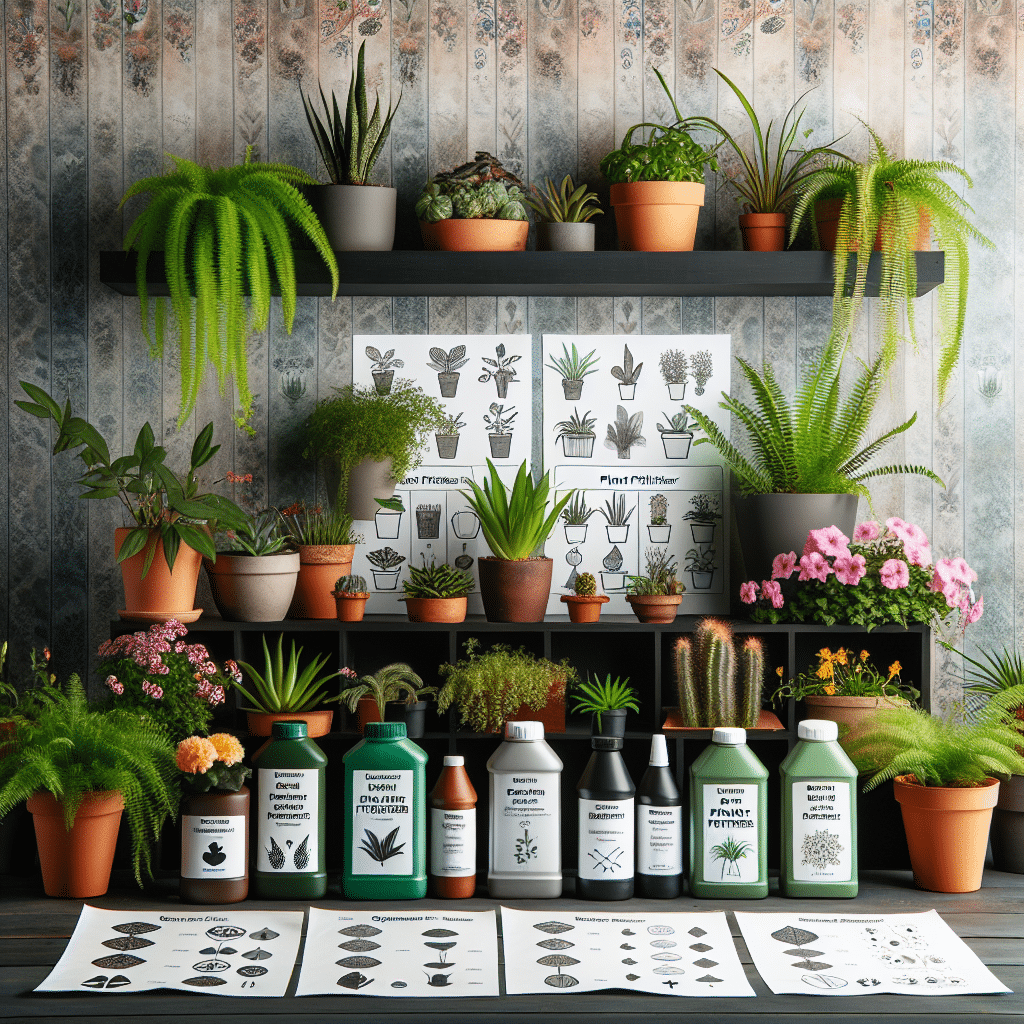Comprehensive Indoor Plant Fertilizer Reviews
Understanding Indoor Plant Fertilizers
Indoor plant fertilizers are essential for promoting healthy growth, vibrant foliage, and blooming flowers. They provide essential nutrients like nitrogen, phosphorus, and potassium (N-P-K), along with micronutrients which are crucial for plant metabolism. Selecting the right fertilizer can make a significant difference in growing strong and beautiful indoor plants.
Types of Indoor Plant Fertilizers
-
Liquid Fertilizers: These are readily available and are easily absorbed by the plants. They are ideal for quick nutrient boost and can be applied through watering or foliar spraying. Example brands include General Hydroponics and Miracle-Gro.
-
Granular Fertilizers: These slow-release fertilizers provide nutrients over time, reducing the frequency of applications. Fertilizers like Osmocote and Jobe’s Organics are popular choices for their prolonged effects.
-
Organic Fertilizers: Made from natural sources, these fertilizers improve soil health and microorganism activity. Examples include FoxFarm’s Happy Frog and Dr. Earth Organic Fertilizer.
-
Specialized Fertilizers: These are formulated for specific types of plants such as orchids, cacti, or succulents. For instance, FoxFarm’s Grow Big is designed for leafy greens while Orchid Fertilizer is perfect for delicate orchid species.
Top Indoor Plant Fertilizer Recommendations
1. Miracle-Gro Water Soluble All Purpose Plant Food (24-8-16)
- Nutrients: With a versatile N-P-K ratio, this option works well for a variety of indoor plants.
- Usage: Dissolve in water and apply every 1-2 weeks during the growing season.
- Pros: Rapid absorption; promotes lush green foliage and flowering.
- Cons: Overuse can lead to fertilizer burn.
2. Osmocote Smart-Release Plant Food (14-14-14)
- Nutrients: Balanced N-P-K, ideal for regular houseplants.
- Usage: Apply at the beginning of the growing season for steady nutrient release.
- Pros: Lasting effects up to 6 months; reduces frequency of feeding.
- Cons: Higher initial cost compared to liquid options.
3. FoxFarm Grow Big Liquid Concentrate Fertilizer (6-4-4)
- Nutrients: Designed for vegetative growth, rich in micronutrients.
- Usage: Mix with water and apply every other week.
- Pros: Encourages vigorous plant growth and enhances soil health.
- Cons: Requires careful dilution to prevent over-fertilization.
4. Jobe’s Organics All Purpose Fertilizer (4-4-4)
- Nutrients: Balanced N-P-K with added beneficial microbes.
- Usage: Can be mixed into potting soil or top-dressed.
- Pros: Organic certification; encourages healthy soil ecosystem.
- Cons: Slower nutrient release compared to synthetic options.
5. Anthurium Fertilizer by Bethel Farm (30-10-10)
- Nutrients: High nitrogen content, perfect for tropical plants.
- Usage: Dilute in water, use weekly during the growing season.
- Pros: Enhances green foliage; ideal for indoor anthuriums.
- Cons: May not support blooming in flowering plants.
6. Foliage-Pro Liquid Plant Food by General Hydroponics (9-3-6)
- Nutrients: Provides a balanced mix ideal for all types of indoor houseplants.
- Usage: Mix into water during each watering.
- Pros: High-speed absorption; delivers essential trace elements.
- Cons: Higher price point than standard fertilizers.
7. Humboldt Nutrients’ Liquid Seaweed Fertilizer (1-0-1)
- Nutrients: Organic composition derived from seaweed, which enhances stress resistance.
- Usage: Use as a foliar spray or in soil bi-weekly.
- Pros: Improves plant health, boosts immunity against pests.
- Cons: Limited N-P-K profile may require supplementary feeding.
Fertilizer Application Tips
- Read Instructions: Always follow the label guidelines to prevent nutrient burns.
- Monitor Plant Condition: If the leaves turn yellow or brown edges develop, assess your fertilization schedule.
- Adjust Seasonally: Increase frequency and dosage during the growing season (spring and summer), and reduce in fall and winter.
- Use Watering Techniques: Water with fertilizer until it runs out of the pot’s drainage holes to ensure even saturation.
Factors to Consider When Choosing Fertilizers
- Plant Type: Different plants have varying nutrient requirements; flowering plants often need higher phosphorus levels.
- Soil Quality: Consider your potting mix and any pre-existing nutrients in the soil.
- Plant Age: Younger, fast-growing plants may require more frequent feeding than established plants.
Conclusion
When selecting indoor plant fertilizers, it’s crucial to consider the specific needs of your plants, as well as the type of nutrition you want to provide. From liquid to granular and organic options, there’s a diverse range available to help your indoor garden thrive. Always prioritize quality over quantity to ensure the health and vitality of your beloved houseplants. Regular monitoring of plant health combined with the right fertilization strategy will lead to thriving indoor greenery.
